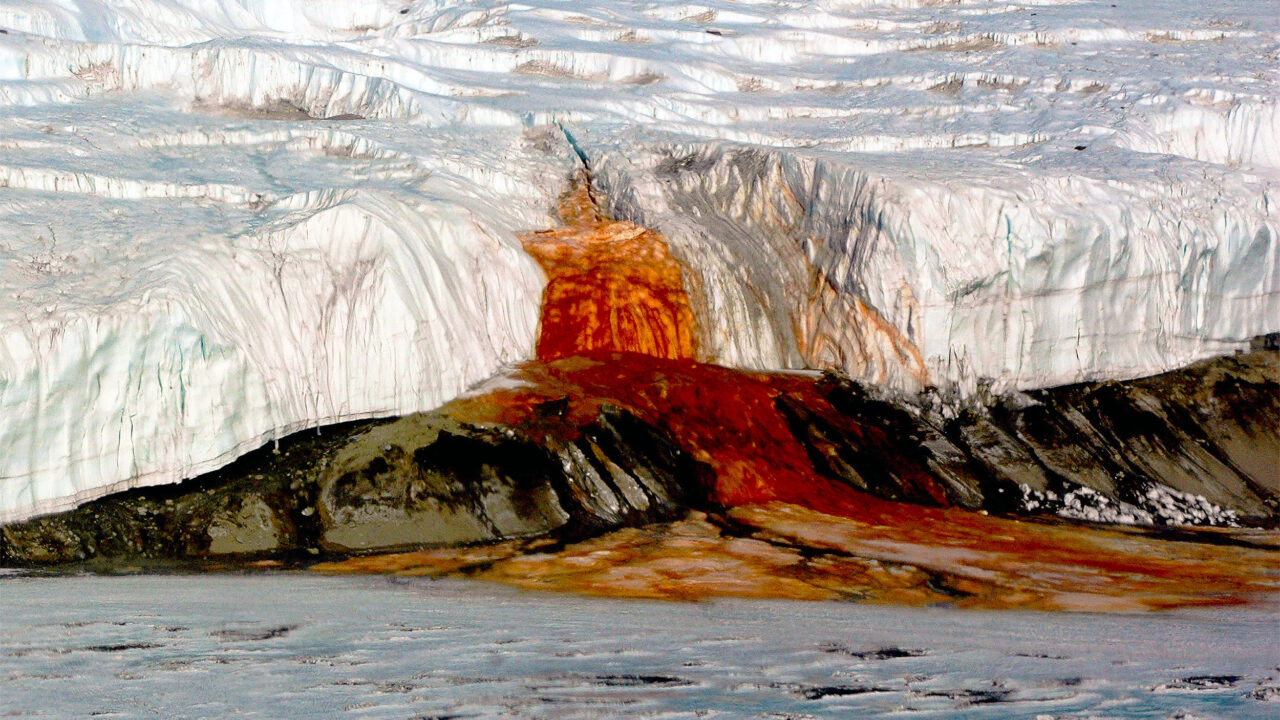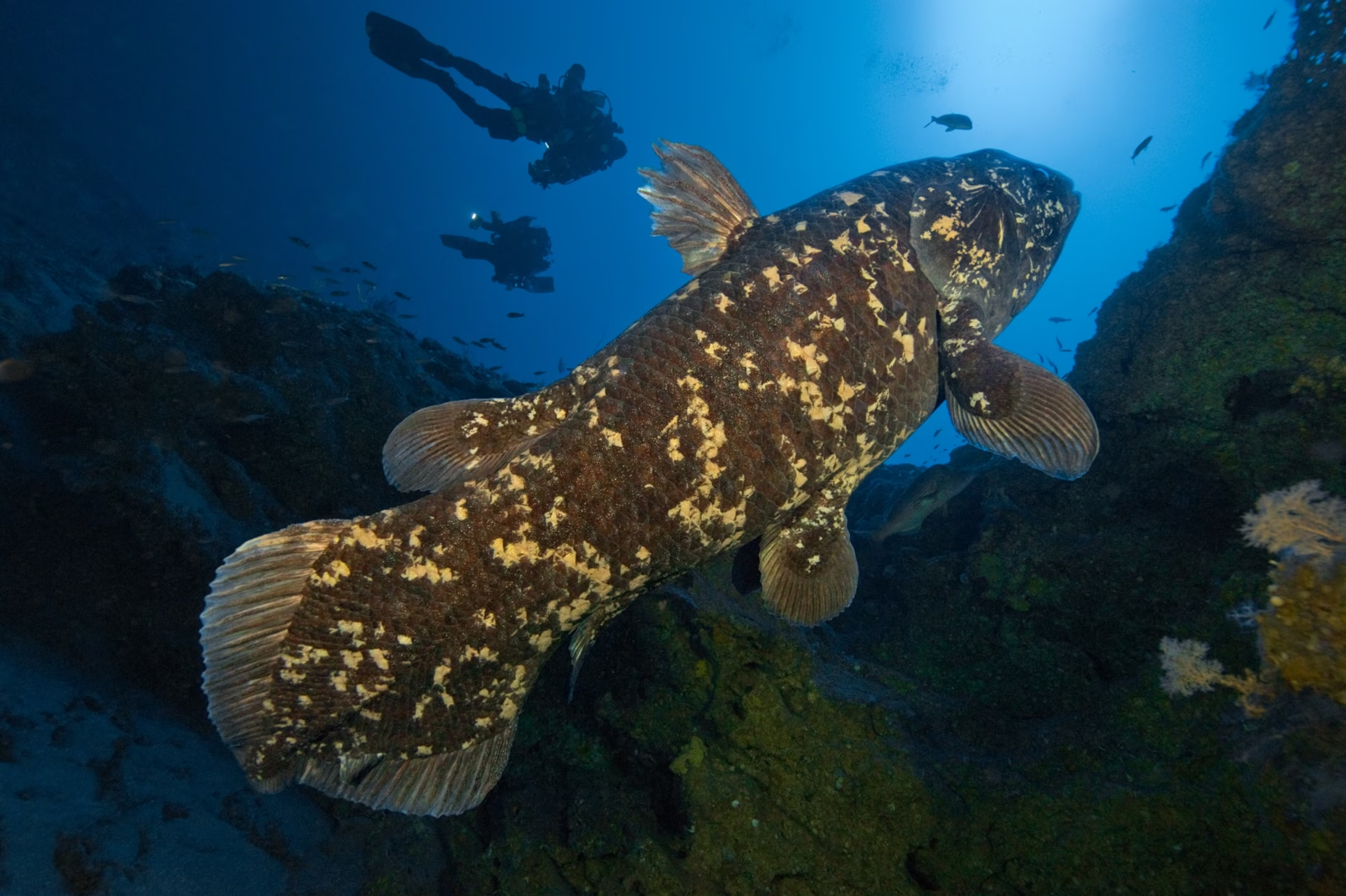The coelacanth is one of the most extraordinary living creatures on Earth. Known as a “living fossil,” this deep-sea fish was believed to have gone extinct around 66 million years ago until a living specimen was discovered in 1938 off the coast of South Africa. Since then, scientists have studied the coelacanth to better understand evolution, adaptation, and the deep history of life on Earth.
What Is a Coelacanth?
The coelacanth belongs to the class Actinistia and the order Coelacanthiformes.
Two living species are known today:
- Latimeria chalumnae – Found in the western Indian Ocean near the Comoros Islands, Madagascar, and eastern Africa.
- Latimeria menadoensis – Discovered near Sulawesi, Indonesia, in 1997.
Fossil evidence shows that coelacanths first appeared over 400 million years ago during the Devonian period, long before dinosaurs roamed the Earth. Their discovery alive in the 20th century shocked the scientific world.
Why It’s Called a “Living Fossil”
The term “living fossil” refers to living organisms that closely resemble their ancient fossilized ancestors. Coelacanths earned this title because:
- They were thought to have gone extinct for millions of years.
- Their body structure has changed very little compared to fossil specimens.
- They retain primitive anatomical features that link them to early vertebrates.
However, modern studies show that while the coelacanth’s appearance is ancient, its genome has continued to evolve, disproving the idea that it is unchanged since prehistoric times.
Unique Physical Features
The coelacanth’s anatomy is unlike any other modern fish. Some of its most fascinating characteristics include:
- Lobed fins: Instead of thin, ray-like fins, coelacanths have fleshy lobes with internal bones resembling limbs. These fins move in alternating pairs, similar to the movement of four-legged animals.
- Notochord: Instead of a solid backbone, the coelacanth has a hollow, oil-filled notochord for flexibility and buoyancy.
- Electroreception: A special organ in the snout detects electric fields from prey, allowing the coelacanth to hunt in total darkness.
- Unique reproduction: Coelacanths are ovoviviparous – they give birth to live young after a gestation period estimated to last up to five years.
Habitat and Distribution
Coelacanths live in deep-sea environments, typically between 100 and 500 meters below the surface.
They prefer volcanic slopes, underwater caves, and rocky reefs where they can remain hidden during the day.
- The West Indian Ocean coelacanth inhabits areas near the Comoros Islands, Mozambique, Madagascar, and South Africa.
- The Indonesian coelacanth lives off the coast of North Sulawesi and nearby islands.
Because of their deep-sea habitat, sightings are rare, and studying them in their natural environment remains a significant challenge.
Life Cycle and Behavior
Coelacanths grow slowly and live exceptionally long lives some individuals may live up to 100 years. They mature late, reproduce infrequently, and have few offspring, making them highly vulnerable to population decline.
Their slow metabolism allows them to survive in low-oxygen environments. At night, they leave their caves to feed on smaller fish, squid, and other marine creatures using stealth and electro-sensory detection.

Conservation and Threats
Despite their protected status, coelacanths face threats from deep-sea fishing, habitat destruction, and accidental capture in nets.
Because of their slow reproductive rate and limited population, even minor human interference can have lasting effects.
Conservation organizations and governments have implemented marine protected areas and awareness campaigns to safeguard coelacanth habitats.
The IUCN Red List currently classifies the African coelacanth (Latimeria chalumnae) as Critically Endangered and the Indonesian species (Latimeria menadoensis) as Vulnerable.
Evolutionary Importance
The coelacanth plays a vital role in our understanding of vertebrate evolution.
It is closely related to the ancestors of the first tetrapods the early vertebrates that transitioned from sea to land about 370 million years ago.
By studying its genome and anatomy, scientists gain insights into how fins might have evolved into limbs and how early animals adapted to life on land.
Misconceptions About the Coelacanth
While the term “living fossil” is widely used, it can be misleading.
The coelacanth is not a frozen relic of the past but a species that has adapted and survived through dramatic environmental changes for millions of years.
Modern research has revealed new genetic developments and molecular adaptations that prove it continues to evolve just at a much slower rate than most species.
The coelacanth is a rare and ancient survivor, bridging the gap between prehistoric oceans and the modern world.
Once thought extinct, this extraordinary fish reminds us of nature’s resilience and the mysteries still hidden in the deep sea.
Its story is not just about survival, but about evolution itself a living link to the ancient past that continues to swim silently beneath the waves.





